Mystic, Connecticut | Could You Live Here?
Could you live in Mystic, Connecticut? The waters run deep in this lively seaport that celebrates maritime history and ocean beauty.
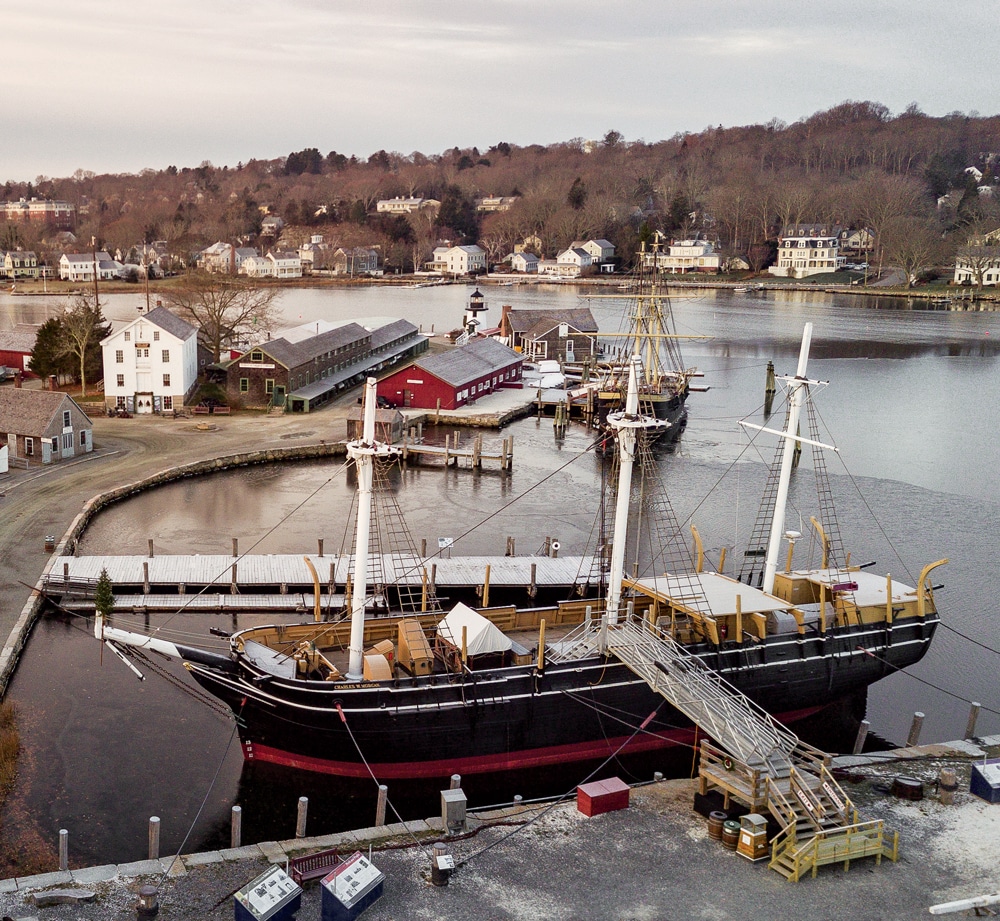
The 176-year-old Charles W. Morgan, the last wooden whaling ship in existence, at Mystic Seaport (with the Joseph Conrad in the background).
Photo Credit : Mark FlemingBy night, the river glides through the heart of Mystic in silence. It’s dark and mysterious, with a moody quietude that makes it easy to imagine tall ships sailing the narrow waterway out to the harbor and beyond. But tonight is different. On this late November evening, the river blazes with boats, tall and small, roped with brilliance, and fireworks flare overhead. Mystic’s Holiday Lighted Boat Parade bedazzles the darkness. The riverbank is thronged, the community streaming together from all directions, parents hoisting children onto shoulders, to gape at the luminous beauty.
A half mile up the street at Mystic Seaport, the largest maritime museum in the U.S.—and the town’s very own minihamlet—actors are prepping for the annual Lantern Light Tours. For the next month, visitors will be squired through the museum’s re-created 19th-century village as the performance unfolds by lantern light, carrying on a nearly 40-year tradition. Shadows of ships’ masts sway along the waterfront, ghostly reminders of a seafaring tradition that drifts back to the 1700s, scant decades after Mystic was founded in 1654.

Photo Credit : Mark Fleming
But Mystic’s deeply felt connection with the sea lies above and below the surface. Just a mile and a half inland, two beluga whales sleep in their element at Mystic Aquarium. Thirty-two charming little penguins from South Africa are, we assume, tucked in for the night. Neon-pink jellyfish drift in solitude, oblivious to the fact that each year more than 100,000 schoolchildren are learning secrets of the sea here.
By day, it’s clear to see how this pretty, bustling seaport (population 4,205) offers up everything else you could wish for: restaurants with fresh seafood in abundance, walking streets full of shops and cafés, bookstores with boatloads of theme-appropriate books, movie tie-ins (Amistad and Mystic Pizza), even a few surprises. And that old Mystic River running through it all.
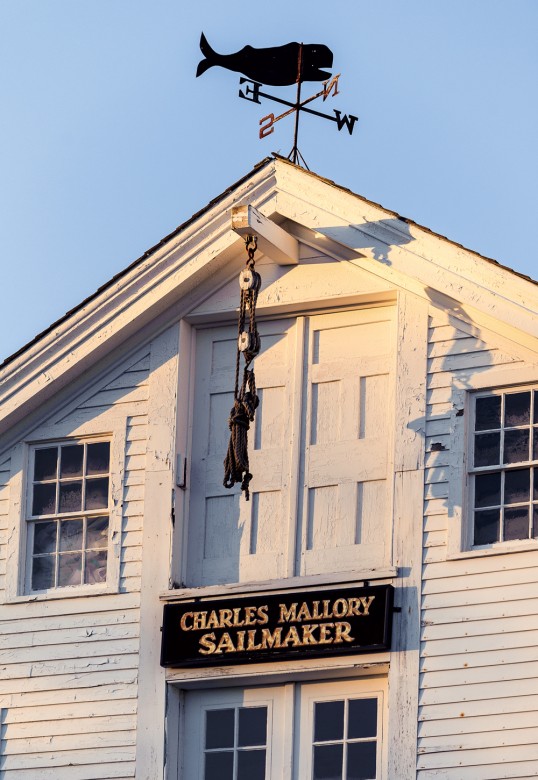
Photo Credit : Mark Fleming
The Setting
Located halfway between Boston and New York City, Mystic has a mild city vibe wrapped in the mantle of a small town. Stand on the massive Mystic River Bascule Bridge, a drawbridge dating back to 1920, and you’re planted between two realities: Upriver, there’s a full view of Mystic Seaport, with its 19th-century shipyard; downriver, the water spills into Fishers Island Sound, then Long Island Sound. Each hour the bridge rises up, like some steam-punk leviathan, to let boats pass through, while road traffic backs up. Nobody honks. Mystic dwellers ignore the phenomenon. The rest of us stop in our tracks to marvel.
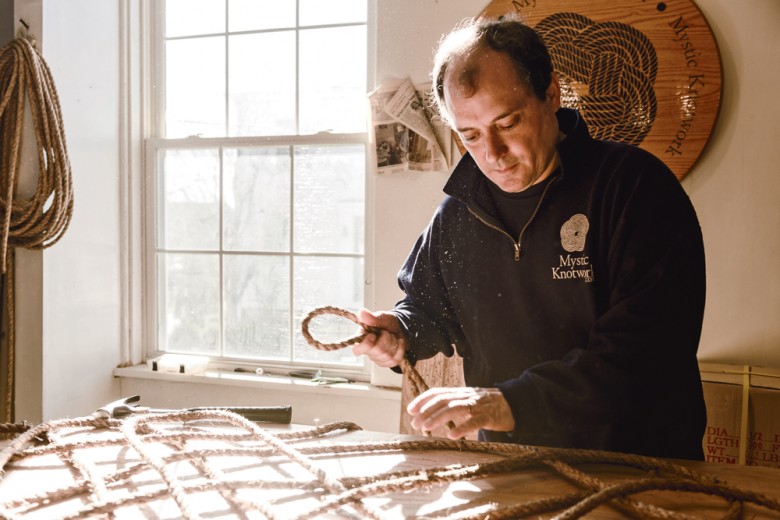
Photo Credit : Mark Fleming
The Social Scene
Who wouldn’t want to time-travel to the 19th century, volunteering at Mystic Seaport in the boathouse, gardens, or children’s museum? “Do you really want to know what brought me to the Seaport?” asks Nancy Hughes, a 16-year veteran of the Lantern Light Tours. “It was 9/11. I was living here, but before that I’d lived on the Upper West Side for years. It really affected me. I saw a casting call for Lantern Light and auditioned, and then I fell in love with the waterfront.” She pulls a fresh-cooked pie from the ashes of the fireplace at Buckingham-Hall House. “It’s really peaceful here,” she says. “Like stepping into another time.”
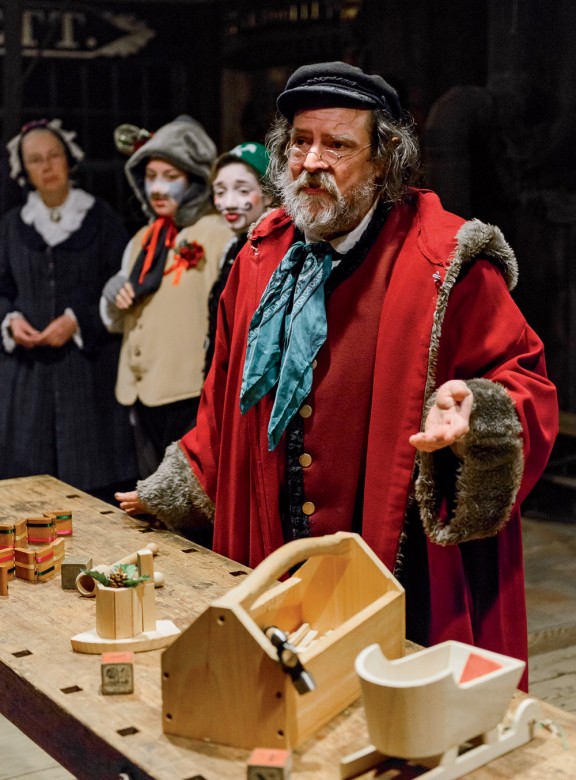
Photo Credit : Mark Fleming
Outside the Seaport, those more inclined to literally get their feet wet might choose to volunteer at the aquarium to work with the public, with penguins, or even alongside belugas Kela and Juno.
Eating Out
“Mystic has certainly become a destination for foodies, and families looking for New England dishes,” observes Sandra Chapman, innkeeper at the Steamboat Inn. Raw-oyster aficionados toggle between the celebrated Oyster Club, wrapped in barn-board chic, and S&P Oyster Co. on the river. Buttery cod is doubly warming in the brick-cozy pub at the 1754 Captain Daniel Packer Inne. Seafood goes Italian at Bravo Bravo—linguine and clams in garlic or champagne risotto with lobster. On the lighter side, Rise serves breakfast and brunch in a café setting that’s as cheery as a bluebird, and French bakery Sift offers temptations such as fresh croissants, tuna Nicoise baguettes, and hazelnut latte éclairs. Cinnamon hot apple cider at Bartleby’s might be the most perfect companion to the Sunday Times.
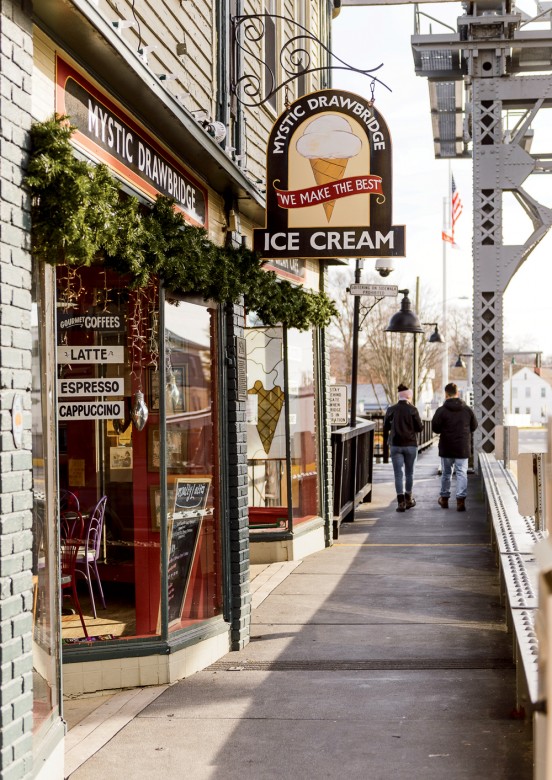
Photo Credit : Mark Fleming
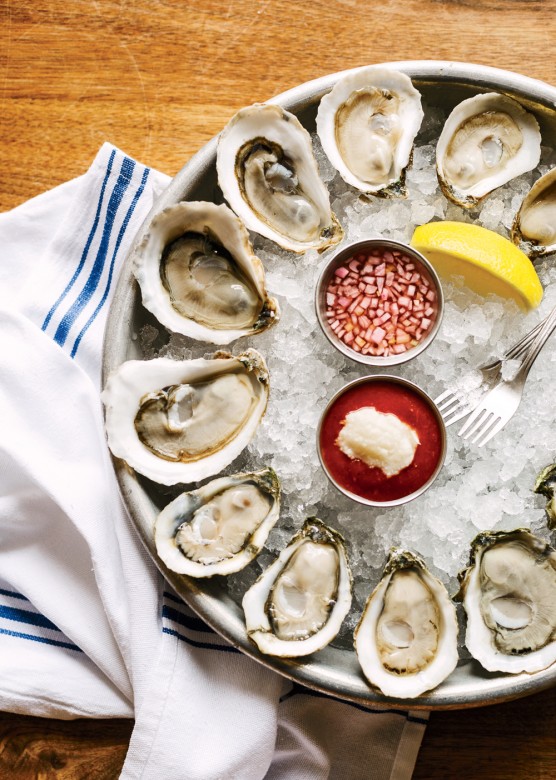
Photo Credit : Mark Fleming | Food Styling by Jennifer Doak
The outstanding two-story gift shop at Mystic Seaport sells all things maritime, from a plush toy squid to model ships, and books on topics from rigging to scrimshaw (but don’t skip independent Bank Square Books on Main Street). Near the bridge, the Spice & Tea Exchange is a fragrant den of spice, salt, and tea leaves. A few blocks away, the Army Navy Store brings you back to earth. But among the myriad wonderful little shops, Mystic Knotwork stands out for being rooted in tradition. Owner Matt Beaudoin’s grandfather, Alton, got young Matt started making the kinds of rope bracelets long associated with summer by the sea. “I have no idea when I tied my first knot,” Beaudoin says. “But my grandfather paid me a dime apiece, and when I was 8 years old, I paid for my first bike.” He and his wife, Jill, and their staff work to send rope bracelets, doormats, trivets, key chains, Christmas ornaments, and coasters all over the country. Happily, he observes, “Mystic still has the ribbons of its roots. It’s still a local destination for us, not just tourists.”
If you’re still gift hunting at the end of the day, the colonial-style compound Olde Mistick Village, near the aquarium, presents more than 50 additional shops; you can even find a yellow slicker for your pet here, at Raining Cats and Dogs.
Real Estate
At the time of this writing, we found a three-bedroom, two-bath turnkey 1890 Victorian with loads of extras in the heart of Mystic for $439,900. Water birds could park themselves on Steamboat Wharf in a mint two-bed, four-bath condo that included 40 feet of dock, steps from their home, with “spectacular water views,” for $599,000. And a two-bed, two-bath 1940s farmhouse two blocks from downtown listed at $350,000.

Photo Credit : Mark Fleming
Uniquely Mystic
Mystic Seaport’s 17 acres provides one of New England’s great backyards for locals to enjoy. The village includes a schoolhouse, a church, a cooperage, and a working shipyard. But the boats are the real stunners: the Charles W. Morgan (1841), the last existing whaling vessel; the full-rigged, iron-hulled Joseph Conrad (1882); and the beauteous Amistad, with its sky-high masts, built in 2000 at the shipyard. Members enjoy unlimited general admission for about $70 a year—it’s hard to imagine a nicer picnic spot. Even apart from the museum, walking Mystic’s side streets is like strolling through history. It’s rare to pass a house without a sign detailing who built it and when—a beautiful melding of the town’s present and past.

Photo Credit : Mark Fleming
Getting Your Bearings
The elegant Whaler’s Inn overlooks the water (Room 61 affords a perfect view of the boat parade), with on-site dining at Bravo Bravo. On the waterfront, the sleek Steamboat Inn offers 11 rooms with water views, decks, and wood-burning fireplaces. And, after years of renovation, the Spicer Mansion, built in 1853 for sea captain Elihu Spicer, opened in 2016 as a Relais & Châteaux luxury inn with eight guest rooms and an impeccable Victorian pedigree.
For more photos of our visit to Mystic, go to newengland.com/mystic-2017.
Annie Graves
A New Hampshire native, Annie has been a writer and editor for over 25 years, while also composing music and writing young adult novels.
More by Annie Graves

